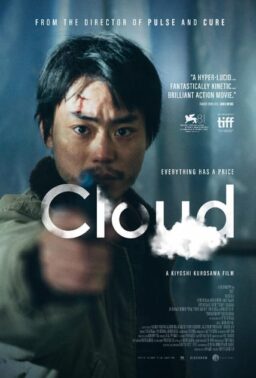When I read the news that Jane Birkin had died, my first thought was of the scene in Agnès Varda’s “Jane B. par Agnès V.,” where Birkin discusses Marilyn Monroe in front of a wall of mirrors. Her body reflects in multiples, then later disappears into the mirrors altogether before Varda cuts to a medium shot, centering Birkin’s head and shoulders in the frame as she stares directly at the camera. Birkin cheekily says she’s like Marilyn because she’d also like to sing a song to her Daddy, before breaking into a rendition of “My Heart Belongs to Daddy.”
In a sense, Birkin’s legacy is similar to Monroe’s; both women became icons of their times, both found success in film and music, both had highly publicized marriages—and divorces—and both were artists who lived complex, politically charged lives. However, those aspects of them are often glossed over in favor of the more superficial achievement of their iconic, incomparable beauty and, in the case of Birkin. This luxury bag bears her name and became a cultural icon and status symbol in its own right.
After surviving leukemia in 2002 and a stroke in 2021, Birkin was found dead in her Paris apartment last week; no cause of death has been revealed.
One of her last public appearances was at the premiere of her daughter Charlotte Gainsbourg’s documentary “Jane par Charlotte,” its title a nod to the earlier work by Varda. Gainsbourg, the only child of the 12-year artistic and romantic union between Birkin and French pop provocateur Serge Gainsbourg, has said she made the documentary to grow closer to her mother.

In the film, the two discuss the complexities of their relationship over the years. Among the subjects the intimate documentary broaches are Birkin’s decision to only have one child with Gainsbourg in order not to exclude her first daughter Kate, the only child from Birkin’s marriage to John Barry, which ended in divorce when she was only 19 years old, from their blossoming family. The two also discuss their shared grief a decade after Kate’s death by suspected suicide at the age of 46.
Along with their thorny past and family traumas, the two also spend much of the film discussing aging. These conversations are particularly compelling as both women spent most of their lives in the spotlight, idolized and scrutinized for their appearances. Charlotte asks Jane when stopped caring about her appearance, to which she replies, “At one point, you no longer recognize yourself in the mirror. Only when you touch your skin, not your reflection. So you remove the mirrors, stop thinking about it, write, do other things, try to make people laugh. Your voice doesn’t change, which is nice, you can keep singing. But as far as visual aspects go, it’s best to take off your glasses so everything is blurry and won’t matter.”
Throughout a career that spanned six decades, Birkin was a consummate creative, appearing in roughly seventy films, recording nineteen albums, and touring her cabaret-style show throughout the globe. Alongside her artistic and personal lives, she concurrently ran her political life. Arriving in France during the 1968 student uprising, she marched against capital punishment, campaigned for abortion rights, attended anti-Vietnam rallies, pushed against far-right nationalism, advocated for immigrant rights and domestic abuse survivors, and spent decades lobbying for action on climate change.
Yet, for all that she would become, in her first four films, her characters didn’t even have names. In “The Knack … and How to Get It,” she is billed as Girl on a Motorbike; in “Kaleidoscope” as Exquisite Thing; and in both “The Idol” and “Blow-up,” simply as the Blonde. While in the psychedelic film “Wonderwall” she gets a name (Penny Lane), she’s still mostly a dream girl in a flower crown. It wasn’t until her divorce from Barry and subsequent move to France that Birkin came into her own as an artist.

In Pierre Grimblat’s 1969 satirical romantic drama “Slogan,” in which Gainsbourg plays a man cheating on his pregnant wife with a younger woman played by Birkin, you can see the two falling in love mapped to the celluloid. Divorced and raising a child alone at 19, Birkin felt as if her life were already over, but felt saved by Gainsbourg, later telling French Vogue, “It was incredible meeting someone who found me beautiful and decidedly erotic. He reconciled me with myself.”
During their twelve years together, they created such erotically charged art—from the 1969 album Jane Birkin/Serge Gainsbourg to the controversial 1976 dramedy “Je t’aime moi non plus”—that much of it was censored or outright banned in certain countries. In retrospect, it’s hard to reconcile the sexual freedom the two explored and the boundaries they pushed through their art with Birkin’s later accounts of his abusive behavior, which eventually led to the dissolution of their romantic partnership after over a decade together.
“Je t’aime moi non plus” in particular is a tough film to watch. In it, Birkin plays a boyish young woman named Johnny, whose life working at small town cafe is upended when she becomes entangled in a relationship with a gay trucker named Krassky (Joe Dallesandro), who has become bored of his relationship with his younger lover Padovan (Hugues Quester). The film explores sexual taboos through explicit and increasingly violent scenes, with Birkin often performing completely in the nude.
In the early 1980s, Birkin found personal and professional freedom in her collaborations with director Jacques Doillon, the father of her third daughter Lou. In Doillon’s films, like “La fille prodigue” and “La Pirate,” Birkin found herself challenged dramatically and lauded critically. She then began appearing in stage productions and found the courage to perform her first live solo show at the revered Paris rock venue the Bataclan.

Although a scroll through posts on social media about Birkin after passing—and even the bulk of those before her passing—would have the uninitiated believe she peaked in her younger years, Birkin herself felt her best years happened after the age of forty. She told French Vogue, “When I see photos of me from 1968, my big doll eyes underlined with eyeliner, exaggerated mouth, bangs, I find it horrible. I found myself the most interesting at forty.”
It’s in this decade, she cemented her fashion legacy when Jean-Louis Dumas, chief executive of Hermès, created the now much sought-after Hermès Birkin bag as a replacement for the signature straw basket she’d carried since the 1960s, after it was destroyed when Doillon reversed his car over it.
It was also when she began working with directors like Varda, James Ivory, Jacques Rivette, Alain Resnais, and Jean-Luc Godard while pushing her own artistic boundaries.
Inspired by the deaths of both Gainsbourg and her own father in the early 1990s, Birkin wrote a script detailing her complicated life as a parent to three daughters with three different men and the lingering connection she has with her own father. A decade later, it became her 2007 directorial debut “Les Boites,” or “Boxes,” starring Natacha Régnier, her daughter Lou Doillon, and Adèle Exarchopoulos.
Birkin’s semi-autobiographical film has the same loose, airy style as Varda’s provocative 1987 film “Kung-Fu Master!” in which Birkin plays a divorced woman who finds herself drawn to a 14-year-old boy, played by Varda’s son Mathieu Demy, disrupting the lives of her daughters, played by Birkin’s actual daughters Charlotte and Lou.

“Boxes” explores similarly thorny territory. Told through the lens of grief, regret, and reflection, living characters interact with the dead; Birkin’s Anna has a jovial relationship with the ghost of her father (Michel Piccoli), while her middle daughter Camille (in some meta-casting played by her youngest daughter) has an uncomfortably close relationship with the ghost of her father (Maurice Bénichou). The film is sometimes a little too ponderous, but it’s also a deeply personal, brave, and raw exorcism of Birkin’s personal demons.
Towards the end of “Jane par Charlotte,” Gainsbourg’s voice narrates as she and Birkin share an embrace by a roaring sea, saying, “I wish I were like you, for having faith in life seems to be your philosophy. To live without mistrust. To believe in humanity, in people. To be curious about everything, close to everything, to everyone without filters.”
While Birkin the icon is a projection, a phantom that belongs to the public, Birkin the woman, Birkin the artist belonged only to herself, and her daughters. The legacy she has in them and the body of work she left behind is as unique, contradictory, and incomparable as she was.
In summing up her storied life, Birkin told French Vogue, “I don’t believe in destiny. I think we can change everything all the time. Accidents are the best things in existence. They force you to leave a route that seemed to be mapped out, and it’s often when you branch out that you meet some incredible guy who changes your life or an unusual project that turns your career on its head. It’s often when things aren’t going well that we are forced into doing them differently and they suddenly become interesting.”
Interesting is hardly sufficient to describe a life as complicated and impactful as Birkin’s, but it’s a start.












